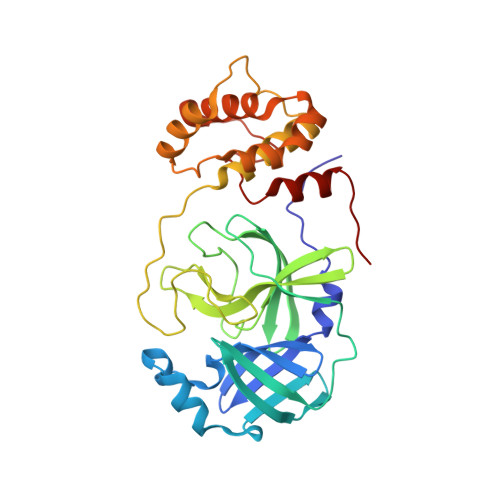The tem-per-ature-dependent conformational ensemble of SARS-CoV-2 main protease (M pro ).
Ebrahim, A., Riley, B.T., Kumaran, D., Andi, B., Fuchs, M.R., McSweeney, S., Keedy, D.A.(2022) IUCrJ 9: 682-694
- PubMed: 36071812
- DOI: https://doi.org/10.1107/S2052252522007497
- Primary Citation of Related Structures:
7MHF, 7MHG, 7MHH, 7MHI, 7MHJ, 7MHK, 7MHL, 7MHM - PubMed Abstract:
The COVID-19 pandemic, instigated by the SARS-CoV-2 coronavirus, continues to plague the globe. The SARS-CoV-2 main protease, or M pro , is a promising target for the development of novel antiviral therapeutics. Previous X-ray crystal structures of M pro were obtained at cryogenic tem-per-ature or room tem-per-ature only. Here we report a series of high-resolution crystal structures of unliganded M pro across multiple tem-per-atures from cryogenic to physiological, and another at high humidity. We inter-rogate these data sets with parsimonious multiconformer models, multi-copy ensemble models, and isomorphous difference density maps. Our analysis reveals a perturbation-dependent conformational landscape for M pro , including a mobile zinc ion inter-leaved between the catalytic dyad, mercurial conformational heterogeneity at various sites including a key substrate-binding loop, and a far-reaching intra-molecular network bridging the active site and dimer inter-face. Our results may inspire new strategies for antiviral drug development to aid preparation for future coronavirus pandemics.
Organizational Affiliation:
Diamond Light Source, Harwell Science and Innovation Campus, Didcot, OX11 0DE, England, United Kingdom.















